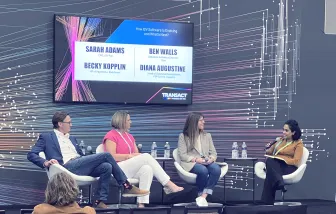Vending machines have been around for ages. The first automatic vending machine, which dispensed stamps, dates back to the 1860s. Although the vending machines you manage aren’t that old, they may have a few decades of service. So, with vending representing a solid business opportunity and even seeing growing demand in some markets, it may be time for you to consider updating your vending solutions to capitalize on growing demand.
Vending Machines’ Potential
A 2024 Gitnux Marketdata report puts the average profit from a single vending machine at $75 per week and a full-line vending installation generating more than $500 profit per month.
Vending Locator reports that the most profitable vending machines include snack and drink machines, with items marked up at 300-400%. Place those machines in airports, hotels or motels, office buildings, shopping centers, apartment buildings, industrial facilities, hospitals, or other high-traffic areas, and you can build an above-average revenue stream. Part of capturing that profit, however, is configuring vending solutions to deliver the best customer experiences in addition to the right products.
Optimizing Vending Customer Experience
To maximize profits, you should regularly clean and stock machines and inspect them to ensure they’re operating correctly and with minimal downtime. Updating older machines can also increase their appeal to consumers. For example, updating to more energy-efficient cooling technology can improve the sustainability of your business.
One of the most impactful upgrades you can make to a vending solution is to accept a broader range of payments. Payment choice is an important factor when consumers decide where to make purchases, and digital vending payments can keep customers coming back because they know your vending machines offer speed and convenience.
Options for upgrading a vending solution’s payment capabilities include replacing the payment terminal. Most machines deployed in the past few decades use multi-drop bus (MDB) connection technology. It operates the vending machine control board and transfers information from the machine to the coin counter, the bill validator, or the payment card reader. When it confirms the correct payment, it releases the item the customer purchased.
Many vending machine card readers are configured only to accept credit or debit card payments. However, with more consumers using mobile wallets – even more than traditional payment methods – vending businesses may be missing sales because consumers only have a smartphone instead of cash or cards to make a payment. So adding NFC, tap and pay functionality is important.
Like other payment devices, unattended payment terminals integrated with vending machines must be Payment Card Industry Data Security Standard (PCI DSS) compliant. PCI also continually updates standards for point of interaction (POI) security, and older machines may be more vulnerable to attacks from cybercriminals. Although merchants can still use PIN Transaction Security (PTS) v3.x devices, 4.x- and 5.x-compliant devices are available with stronger payment data security.
Vending business owners also need to recognize that if they’re still accepting payment card swipe payments, they’re liable for fraudulent charges and could face fines. All payment card terminals should be compliant with the EMV standard to protect payment data – and the vending machine business.
Vending machine operators may also consider upgrading the modem that communicates payment data for approval. Older machine modems likely use the 3G communication standard. Upgrading to 4G or 5G modems can significantly increase the data transfer rate, speeding approvals and customer interactions.
Is it Time to Upgrade to Smart Vending?
Instead of upgrading, vending businesses also have the option to deploy new machines with advanced capabilities. Internet of Things (IoT) technology makes it possible to create internet-connected vending machines. These solutions include computing power that manages the vending machine, including collecting data from sensors that communicate inventory data in real time and alerts when machines need maintenance.
Smart vending machines also expand payment options, using a network connection to communicate with a payments gateway or payment processor, and enabling machines to accept a wide range of payments, including QR code or other alternative payments.
Work with the Right Partner to Modernize Vending Solutions
Whether you’re considering upgrading your vending machines with a new payment device that works with your existing MDB connector or retiring older machines and replacing them with smart vending solutions, you need an experienced partner to help you achieve your objectives.
Ingenico offers best-of-breed devices with the latest version of PTS security supported by innovative payment platforms. The Ingenico team also have expertise in optimizing solutions specifically for vending. If you’re ready to capture more market share with a cutting-edge vending solution, contact us.











